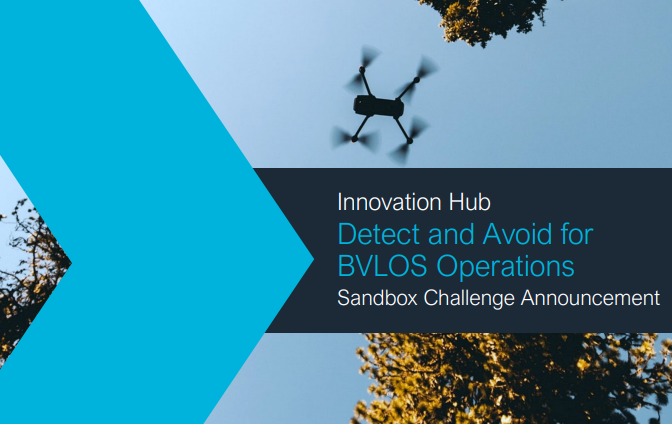The UK Civil Aviation Authority (CAA) Innovation Hub is launching a series of Technology Demonstrators aiming to investigate key technologies that can be used as part of Detect And Avoid (DAA) solutions for Beyond Visual Line of Sight RPAS operations. Three separate technology demonstrators are planned over the coming months as part of this DAA challenge, each of which will investigate a key technology enabler. The aim of the sandbox is to inform the development of frameworks for approving and certifying DAA solutions.
For Remotely Piloted Aircraft Systems (RPAS) to be fully integrated into existing airspace, and for commercial Beyond Visual Line of Sight (BVLOS) operations to scale up, certifiable Detect And Avoid (DAA) solutions need to become a reality. Even though DAA technologies are rapidly advancing, frameworks and standards for approving and certifying DAA systems are still in early stages of development. Given recent and ongoing technological advancements, CAA plans to inform the development of the regulatory frameworks by examining the key enabling technologies in more detail.
It is expected that a complete DAA Solution is likely to include some combination of different technologies and sensors. Industry and academia who are developing DAA technologies and solutions are invited to participate in any of the following Technology Demonstrators:
- Non-Cooperative Sensors
- Electronic Conspicuity (EC)
- Traffic Management, including UTM
The goal of the Technology Demonstrators is to explore the performance requirements of DAA technologies, investigate the applicability and sufficiency of various technical standards for UK airspace, and explore requirements for UK Technical Standard Orders (TSO) for DAA equipment.
The DAA Challenge, through these Technology Demonstrators, will provide benefits to both the CAA and Industry. Certified DAA systems will unlock routine BVLOS operations and enable RPAS operations to be conducted safely at a larger scale. This is one of the key enablers for removing airspace segregation.
View the CAP2238 announcement.
For more information visit:




